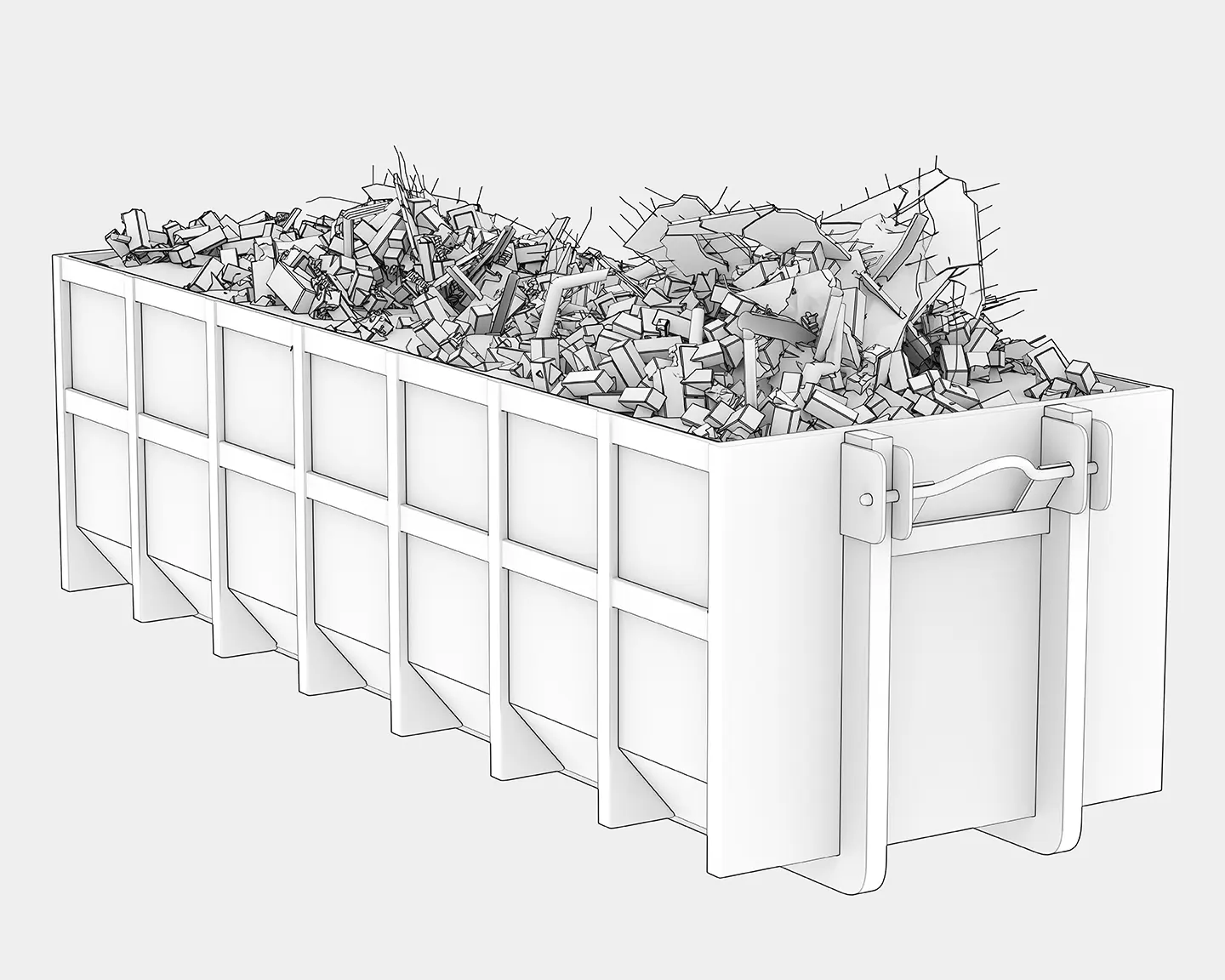While it may not matter as much for smaller clean up projects, maximizing the available space in your roll off dumpster can be the difference between saving money and spending more. When it comes to smaller projects, you may be likely to just throw waste and debris into the dumpster without any care for where it lands and settles. But for larger cleanups, this can lead to wasted space inside the dumpster which lowers the amount of material you can put into the dumpster. Instead of just throwing waste into your dumpster, check out our top tips for using all available space wisely.
Understanding Dumpster Dimensions
Obviously, the first part you should consider is the size of the dumpster you are using. Larger dumpsters can hold more, which is to be expected, but these larger dumpsters may also have an increased height compared to smaller dumpsters. This will fall in line with a tip we explain further down below for stacking vertically inside the dumpster instead of horizontally (or just throwing stuff into the dumpster). Knowing what you will be throwing away will help you to determine how big of a dumpster that you can get, as well as making a determination to whether or not large, bulky items should be broken down to fit better It’s also important because dumpsters also have certain weight limits.
Disassembling Bulky Items
Disassembling bulky items is a key tactic to maximize the space of your rented dumpster. Large and unwieldy items, such as furniture or appliances, often take up significant space when loaded whole. Therefore, before tossing them into the dumpster, consider breaking them down into smaller, more manageable components. This not only frees up valuable space but also ensures a more even distribution of weight within the container, minimizing the risk of imbalances or overloading. Whether it’s removing legs from tables, doors from refrigerators, or other detachable components, the process of disassembling bulky items not only optimizes the available dumpster space but also makes the loading and unloading process smoother and safer. By taking the time to deconstruct larger items, you’re not just enhancing the efficiency of your waste disposal; you’re also contributing to a safer and more environmentally conscious approach to handling materials.
Note that while appliances can typically go into a roll off dumpster, you must ensure that hazardous materials and chemicals have been removed from the appliance (household chemicals and refrigerant are a couple of examples).
Compact and Break Down Materials
Efficient waste disposal involves a strategic approach to compacting and breaking down materials before loading them into the dumpster. Consider compressing softer materials and breaking down larger items into more manageable sizes. By reducing the volume of waste through compaction, you create additional space within the dumpster, allowing for the disposal of more materials. However, it’s crucial to exercise caution and follow safety guidelines when compacting materials to avoid potential hazards. Properly compacted waste not only optimizes space but also contributes to a more organized and cost-effective waste disposal process, benefiting both your project and the environment.
Stack Vertically, Not Horizontally
By stacking items vertically, you maximize the available height of the dumpster, making efficient use of the entire space. This technique allows for better utilization of the container’s capacity, preventing unnecessary gaps and optimizing the overall loading process. Consider the weight distribution and ensure that heavier items are placed at the bottom, with lighter materials stacked on top. Vertical stacking not only enhances the efficiency of waste disposal but also helps maintain a balanced load, minimizing the risk of uneven weight distribution and potential safety concerns. Adopting this practice allows for more effective use of the dumpster space, ensuring that you can dispose of a larger volume of materials while adhering to safe loading practices.
Avoid Empty Spaces
Efficient dumpster loading involves a conscious effort to minimize empty spaces within the container. Avoiding gaps and unused areas is essential for optimizing the available dumpster space. Instead of randomly tossing items into the container, strategically arrange materials to fill voids and empty spaces. Utilize smaller items or break down larger ones to occupy every inch of the dumpster effectively. This meticulous approach not only maximizes the capacity of the dumpster but also ensures that you get the most value out of your rental. By avoiding empty spaces, you contribute to a more cost-effective waste disposal process and reduce the need for multiple pickups, streamlining the overall logistics of your project.
DFW Dumpster Rental
As you embark on your waste disposal journey, remember that loading a dumpster efficiently is not just about discarding materials; it’s about making the most of your space and resources. By following these tips, from proper sorting and disassembling bulky items to strategic stacking and avoiding empty spaces, you’re not only optimizing your dumpster space but also contributing to a more sustainable and cost-effective approach. If you’re ready to elevate your waste management game, consider reaching out to Sweet Dumps at (817) 631-4880. Our team is here to guide you through the process, answer any questions, and ensure your dumpster rental experience is as smooth and efficient as possible. Let’s make your project a success, one well-loaded dumpster at a time!

